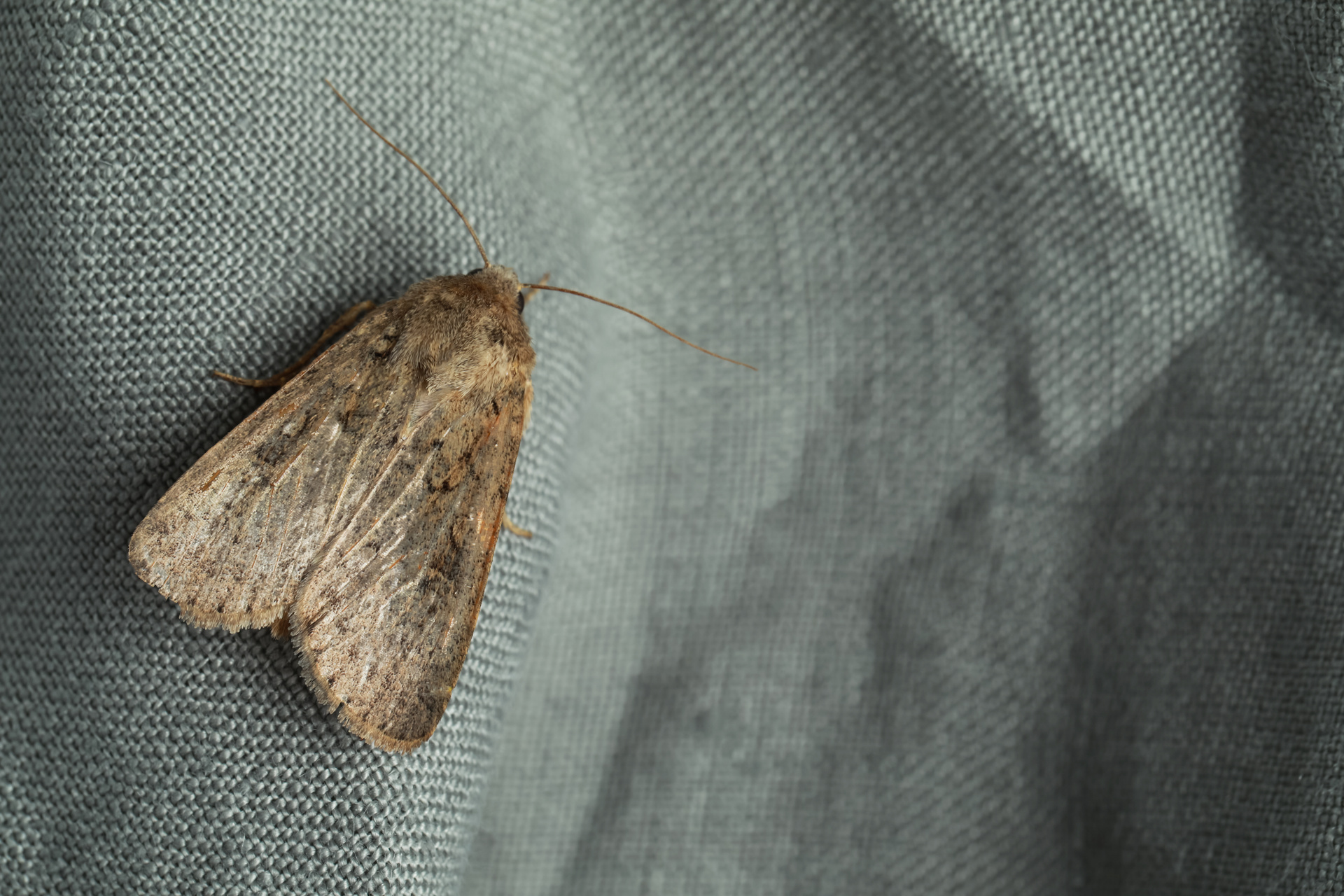
The caterpillar is what remains of a slight plague which you hosted last year. It started, not very surprisingly, with moths – an influx of those small brown house moths. They came into your room from the rest of the house and fluttered about and sometimes they sat on the TV screen and left specks of what you suspected was shit there, but otherwise they didn't bother you.
But then, in the manner of these things, you started seeing caterpillars undulating their way about the place. Along the shelves, around a cushion, across your duvet – it wasn't positively crawling with them so much as vaguely enlivened, plain though they were. They looked like a centimetre-long tube of pus squeezed from a blackhead and might be mistaken for maggots if a person didn't peer closely and spot all their little pairs of tiny feet. Last month you saw Kim on How Clean Is Your House? make exactly that mistake, though whether she’s no entomologist or she was just more intent on shaming the house owner you don't know.
But your caterpillars roamed free, taking chunks out of organic and inorganic matter alike. They munched on polystyrene packing peanuts and you wished you could point them to something more nutritious; they munched on stray supplement capsules and you hoped they were getting more benefit out of them than you ever did.
But before long, caterpillars started turning up dead in half-baked cocoons. In the crevice of a book or the folds of your fresh underwear, there they'd be in their wispy silk shrouds, soft and wondrous to you but a failure as caterpillars.
You wonder whether they knew that: did they feel themselves conking out with their spinning half done, or did they surrender complacently to their sleep? Or did they have no sense of purpose at all, and just blindly serve urges? You kept the book caterpillars where they were, and placed the others reverently in your dustbin.
But there were other caterpillars who made for the ceiling, though you can't think what they were aiming to find up there, and spun no silk at all. They just stopped, over a dozen of them, evenly spaced out above you. Lying there you couldn't decide whether they were dead or just still until you saw the fluids seeping out of their bodies and staining the plaster around them. But still they clung on, for weeks or months afterwards. You only ever saw them full grown, so you don’t think they were born up there and had no chance: you view them as life's losers, who picked the dud option, found nothing to sustain them in the sterile promontory in which they found themselves, and ran out of juice. They did start falling down in the end, one by one, until the only one left is the one right above your head. But their little stains remain.
You expect there are also some failed cocoon caterpillars still lying undiscovered, that they'll turn up eventually in a handbag or hat brim and just as dead, to be fair, as the ceiling caterpillars. What you don't know is whether any of your caterpillars spun successful cocoons and made it into moths. How would you know? The only evidence would be their discarded silk, easily overlooked amid the lint and dross of your bedroom. But you never saw a fully-baked cocoon, empty or full, and there have been no new caterpillars.
And that's the tale of the caterpillar, but if you think that telling it makes a difference to anything – well, the difference it makes is that now you've told the tale of the caterpillar. You're still ill. You're still bedridden. You still have all the endurance of a heap of ashes in a nice breeze, and no prospect of a cure. And you guess you'll just have to lie here and wait for the last caterpillar to fall. Unless... It'll play havoc with your circadians, but it's not as though you have any reason to keep office hours, so maybe tonight you'll put on an eye mask, open your door wide, and leave your lamp on.
ZOE CAMPBELL has been bedbound by severe myalgic encephalomyelitis (ME) for 25 years.
